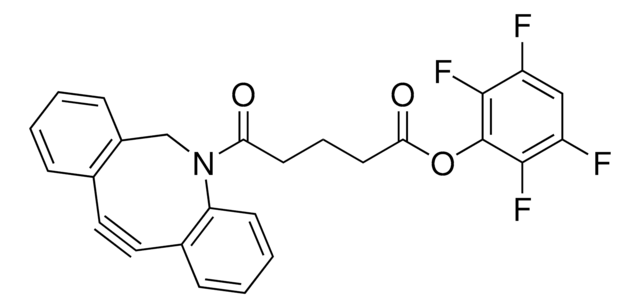777366
DBCO-Cy3
for Copper-free Click Chemistry
Sinônimo(s):
ADIBO-Cy3, Azadibenzocyclooctyne-Cy3, Dibenzocyclooctyne-Cy3
About This Item
Produtos recomendados
Nível de qualidade
forma
solid
adequação da reação
reaction type: click chemistry
temperatura de armazenamento
−20°C
cadeia de caracteres SMILES
CC1(C)C(/C=C/C=C2N(CCCS([O-])(=O)=O)C3=CC=C(S(=O)([O-])=O)C=C3C/2(C)C)=[N+](CCCCCC(NCCC(N4CC(C=CC=C5)=C5C#CC6=C4C=CC=C6)=O)=O)C7=C1C=C(S(=O)([O-])=O)C=C7.CC[NH+](CC)CC.CC[NH+](CC)CC
InChI
1S/C50H54N4O11S3.2C6H15N/c1-49(2)40-32-38(67(60,61)62)23-25-43(40)52(45(49)18-12-19-46-50(3,4)41-33-39(68(63,64)65)24-26-44(41)53(46)30-13-31-66(57,58)59)29-11-5-6-20-47(55)51-28-27-48(56)54-34-37-16-8-7-14-35(37)21-22-36-15-9-10-17-42(36)54;2*1-4-7(5-2)6-3/h7-10,12,14-19,23-26,32-33H,5-6,11,13,20,27-31,34H2,1-4H3,(H3-,51,55,57,58,59,60,61,62,63,64,65);2*4-6H2,1-3H3
chave InChI
HDOXKDFHZWYVPF-UHFFFAOYSA-N
Aplicação
Solubility: DMSO; DMF
Abs/Em: 553/563 nm
Extinction Coefficient:: 151,000 cm-1M-1
Palavra indicadora
Warning
Frases de perigo
Declarações de precaução
Classificações de perigo
Eye Irrit. 2 - Skin Irrit. 2 - STOT SE 3
Órgãos-alvo
Respiratory system
Código de classe de armazenamento
11 - Combustible Solids
Classe de risco de água (WGK)
WGK 3
Ponto de fulgor (°F)
Not applicable
Ponto de fulgor (°C)
Not applicable
Certificados de análise (COA)
Busque Certificados de análise (COA) digitando o Número do Lote do produto. Os números de lote e remessa podem ser encontrados no rótulo de um produto após a palavra “Lot” ou “Batch”.
Já possui este produto?
Encontre a documentação dos produtos que você adquiriu recentemente na biblioteca de documentos.
Os clientes também visualizaram
Artigos
Copper-free click chemistry is an alternative approach to click chemistry that proceeds at a lower activation barrier and is free of cytotoxic transition metal catalysts.
Nossa equipe de cientistas tem experiência em todas as áreas de pesquisa, incluindo Life Sciences, ciência de materiais, síntese química, cromatografia, química analítica e muitas outras.
Entre em contato com a assistência técnica

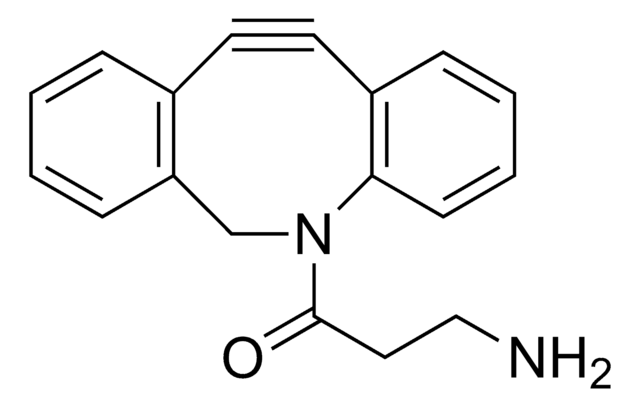
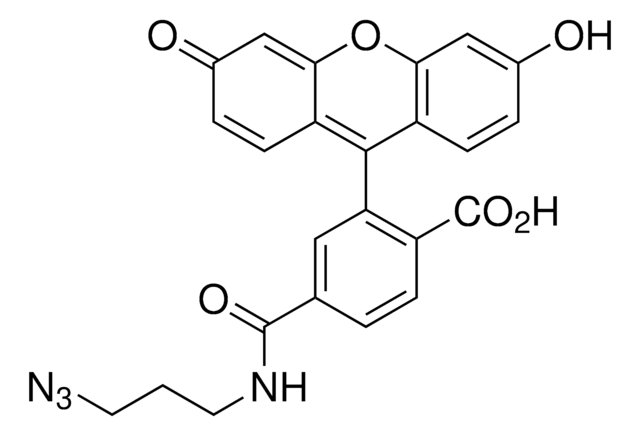


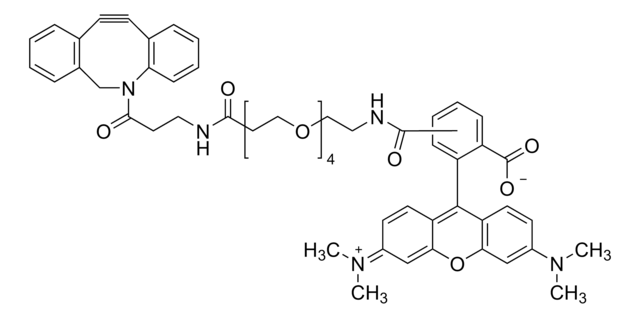
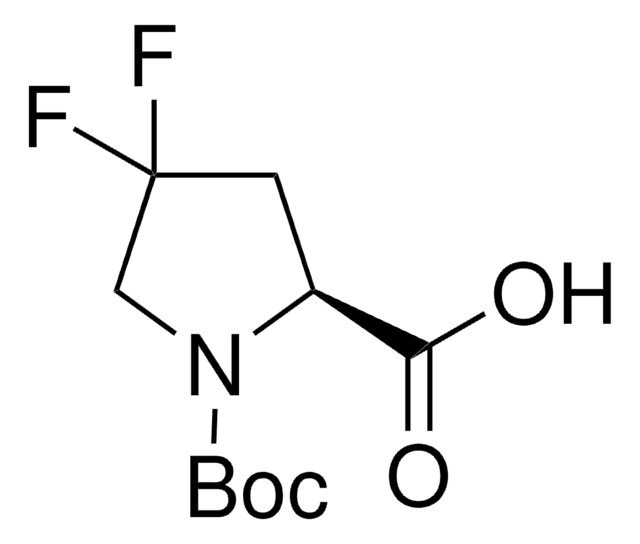
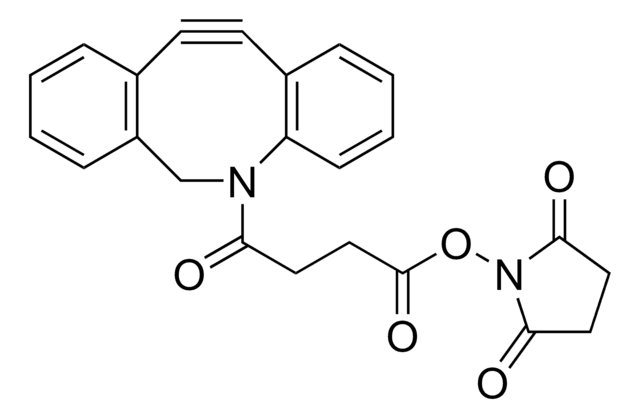
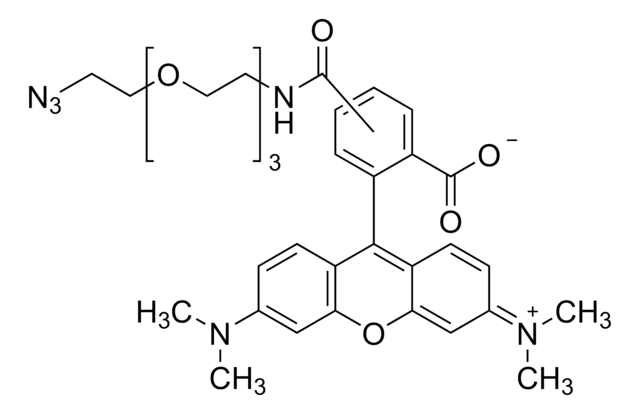


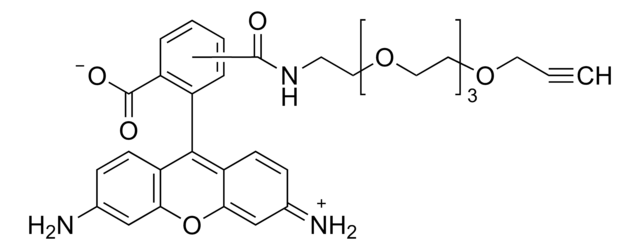
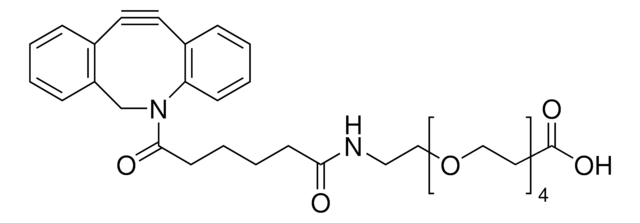
![N-[(1R,8S,9s)-Bicyclo[6.1.0]non-4-yn-9-ylmethyloxycarbonyl]-1,8-diamino-3,6-dioxaoctane for Copper-free Click Chemistry](/deepweb/assets/sigmaaldrich/product/structures/294/853/c5e47d84-5aee-4797-aa24-604f291171cc/640/c5e47d84-5aee-4797-aa24-604f291171cc.png)
